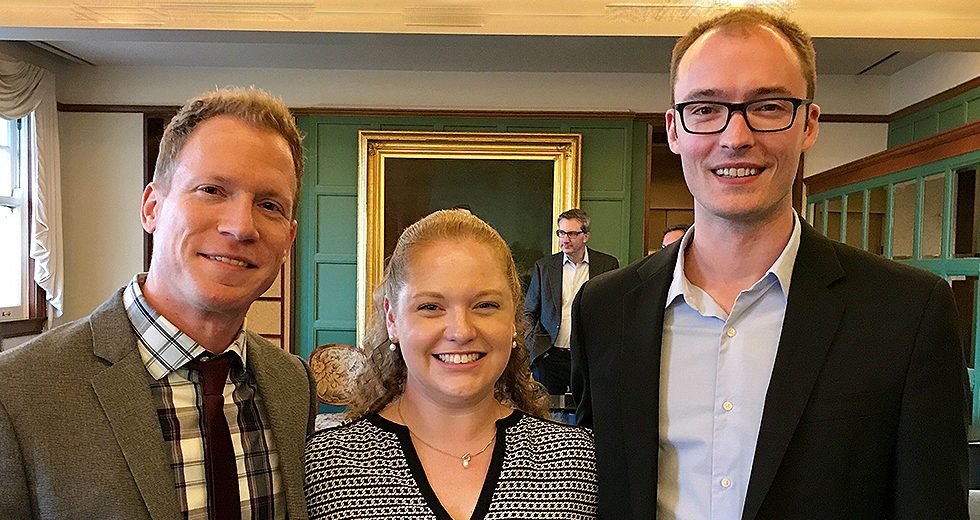
Gregory Hughes, artistic director and principal conductor of the Lakeview Orchestra, discussed “The Craft of Conducting” at the first educational seminar presented this season by the League of the Chicago Symphony Orchestra Association and Chicago’s International Music Foundation.
Established in 2013, the Chicago-based Lakeview Orchestra is a volunteer ensemble. It quickly won acclaim, and in 2016, Lakeview received three awards from the Illinois Council of Orchestras, including Community Orchestra of Year and Best Conductor (Hughes). The conductor also appeared at a League seminar last season.
For his Oct. 5 talk, Hughes opened with a short video featuring English actor-comedian Rowan Atkinson as the buffoonish Mr. Bean, in the process of discovering his conducting powers, baton in hand, as a brass band played Christmas carols on the street. This introduction did not surprise audience members who remembered Hughes’ skillful use of humor in his presentation last year, especially the video clip of Bugs Bunny lampooning Leopold Stokowski in “Long-Haired Hare.”
In his previous talk, Hughes had compared conductors and their styles; he turned his attention this time to two broad elements of conducting: physical gestures and facial expressions. In this clip, Mr. Bean, he explained, had inadvertently, or perhaps instinctively, displayed examples of both by a) holding the baton in his right hand, b) keeping the beat and cueing entrances with the baton, c) signaling expressivity with his left hand and d) conveying instant feedback through his face.
Although one might expect the last in that series to showcase Atkinson’s talent for facial contortion, and therefore, Bean’s characteristic penchant for exaggeration, Hughes showed a video of Leonard Bernstein doing something similar: “conducting” an ensemble playing a Haydn piece while communicating to the players only through facial expressions — entirely without arm movement and the benefit of semaphore that accompanies it.
Hughes led his audience through three basic beat-keeping patterns: the plus sign for the four count, the triangle for the three count and the backward J for the two count. All other patterns, he said, are based on these three. To ensure a clean entrance, the conductor forecasts the downbeat by taking an audible breath and gesturing sharply, subconsciously capitalizing on something that Hughes considers a universally understood phenomenon, “the acceleration of free fall.” As an object falls to the ground, its speed increases every second by 9.8 meters per second. In other words, an object that has been falling for five seconds will have reached a speed of 49 meters per second (5 x 9.8 meters per second).
Hughes proposed that musicians, like all people, have an intuitive understanding of this law of physics, an ability that leads them to discern a conductor’s downbeat simultaneously or within the same tiny fraction of a second. In effect, the players all know the very instant at which the falling object (the conductor’s right hand) will strike the “earth” (the bottom of the beat-keeping pattern).
A “good” gesture, Hughes contends, is one that produces the desired result. Consequently, a conductor has to learn the art gradually over many years by discovering how orchestras actually respond to his gestures. To illustrate this point, he played two videos selected to mark the evolution of a certain eminent conductor’s style at the podium. The first video showed that conductor leading an orchestra early in his career and the second depicted him decades later. The difference between the two, because it was not undramatic, punctuated the quote from Paavo Järvi with which Hughes ended his seminar: “Before 50, nobody is a conductor.”
Mark D. Ball, a member of the League of the Chicago Symphony Orchestra Association, is a research and development scientist at Northwestern Memorial Hospital.
TOP: Overture Council members Michael Fogarty (from left) and Haley Titus pause for a photo with conductor Gregory Hughes.